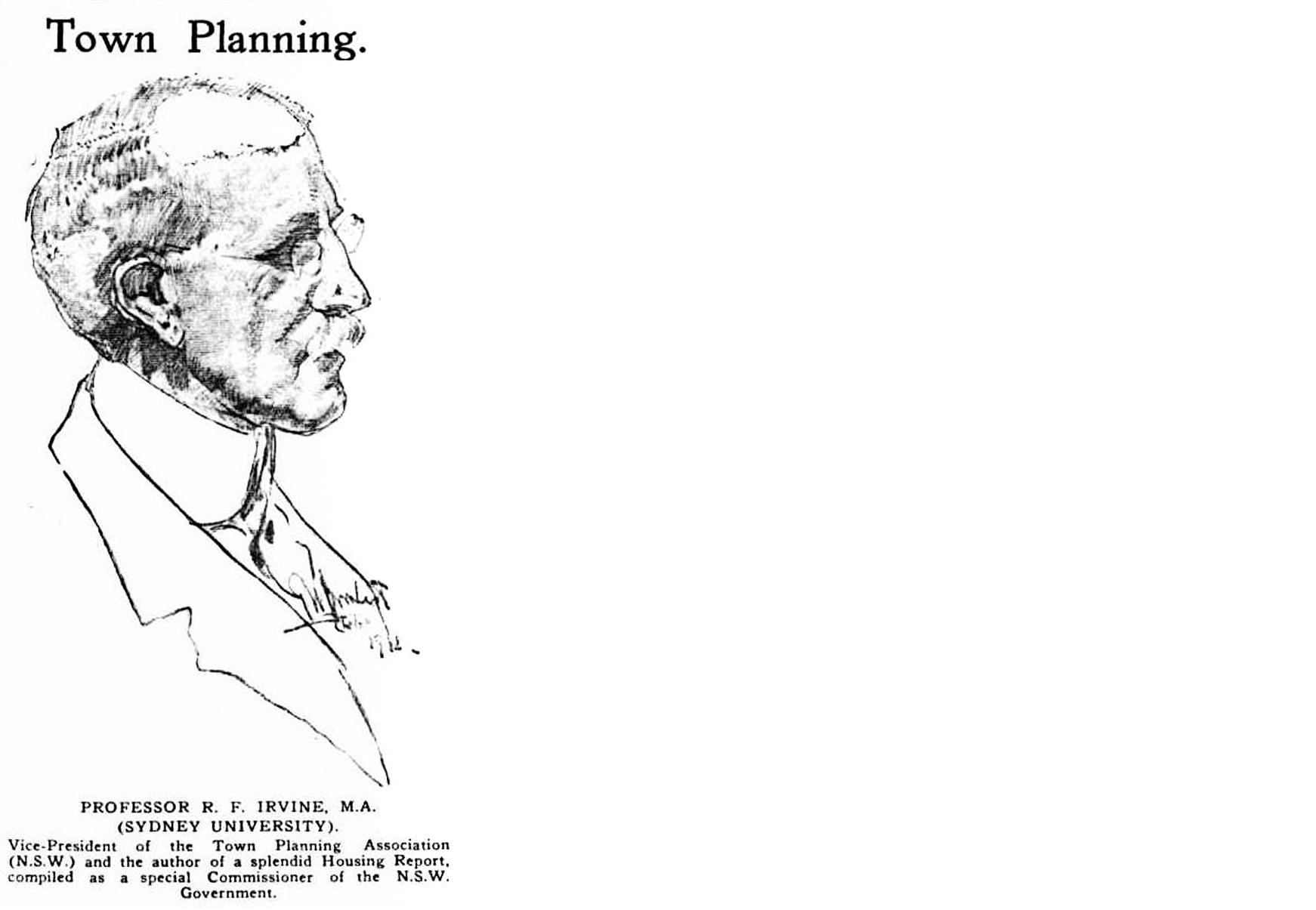|
RF IrvineThe Scottish-born academic, RF Irvine, was the first professor of economics at the University of Sydney when he took up that position in 1912.In that year, also, Robert Irvine moved with his wife Florence and children to ‘Airlie’ in Shellcove Road, Neutral Bay, and then to the nearby 1850s Gothic villa ‘Honda’ which he leased. Irvine lived there until 1919/20. Neutral Bay, and Shellcove Road particularly, was a most respectable location for a university Professor. That precedent had been set in 1893 when Edward Threlfall, Professor of Physics at the University of Sydney, moved into ‘Hollowforth’ just a short distance away. Others would follow. Before and during his residency in Neutral Bay, Irvine consolidated his reputation as a radical economist and a contributor to the widespread debate over housing and town planning. These were heady times for all those concerned with the future of cities and their role in the new nation. In 1913 Irvine was a founding member of the New South Wales Town Planning Association along with John Sulman and JJC Bradfield, the engineer of the future Sydney Harbour Bridge. He was probably aware that Walter Liberty Vernon had developed nearby parts of Neutral Bay as a 'model suburb' with the Neutral Bay Land Company in the 1880s. Irvine had hardly moved into ‘Airlie’ when he was appointetd by the first Labor Government of New South Wales as Commissioner for an ‘Inquiry into the question of the Housing of Workmen in Europe and America’. This took him overseas to look at best and worst practice in housing in Great Britain and North America. The new reformist Government was intensely interested in urban policy and had passed the State’s first Housing Act in 1912, which established a Housing Board with the power to acquire land for development, something that occured quickly in Sydney’s southern periphery where Dacey Garden Suburb was intended to serve as a model for public and private enterprise. Irvine’s report was tabled in 1913 and took a holistic approach to the issue of housing and planning. The condition of the working class, he maintained, affected all classes. Therefore, it was incumbent upon good governments to facilitate good housing. The worst cases of overcrowding and poor housing came from the unregulated market with the result that ‘the land speculator and the jerry builder... have free scope to spoil natural beauty, and lay much trouble for the future’ (Report, p. 110). Irvine praised Dacey Garden Suburb, or Daceyville as it became known. Interestingly, one of the architects of the houses there, SG Thorp, would build his own house near Irvine's home in Shellcove Road in 1919. The past century had seen increased congestion and squalor in the manufacturing cities of advanced industrial countries. So, like most other planning theorists in the early 1900s, Irvine advocated regulated development, decentralisation and zoning which would set industry apart from homes provide the space that all agreed was essential for health. Access to sunlight, fresh air, parks and gardens was a key component of the new ideal suburb. Irvine supported the local application of British models of garden cities and suburbs where space allowed for such suburban decentralisation. This was not the quarter acre block that became the Australian ‘ideal’. Rather, Irvine advocated 10-12 houses per acre. A free thinker on many issues, Irvine held conventional views on the separate domestic roles of men and women. Women were responsible for housework and child rearing. So while his economic radicalism allowed him to suggest communal or shared facilities in working class suburbs, this efficiency would free up time for women to ‘play the part of mother better and to devote themselves to making their homes pleasant and attractive’ (Report, p.127). Communalism and and the provision of public housing were increasingly opposed as fear of socialism took hold with the onset of World War One from 1914 and the Bolshevik revolution of 1917. The Housing Board was dismantled in 1924. While the detached suburban house remained the ideal form of dwelling in the minds of many through the remainder of the 20th century, the Government support of social housing would not be considered again until the creation of the Housing Commission in 1942. Just when Irvine’s political views lost favour, prevailing conservative notions of respectability impacted upon his private life. In 1922 he was forced to resign from the University because of an extra-marital affair. Robert Irvine left Neutral Bay around 1920 but Florence stayed on in Shellcove Road in a Georgian Revival house built for her when the couple separated. |
|


